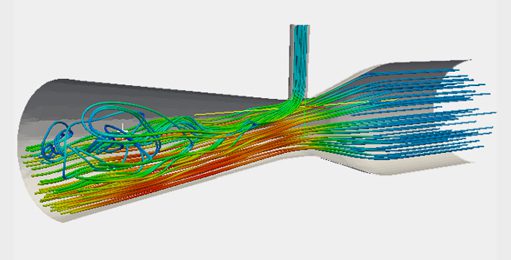What is CFD?
Computational Fluid Dynamics (CFD) is a branch of fluid mechanics that uses numerical analysis and algorithms to solve and analyze problems involving fluid flows. In the oil and gas industry, CFD has become an essential tool for simulating complex multiphase flows, heat transfer, erosion, and turbulence across various systems—from downhole tools and pipelines to refineries and offshore platforms.

Industry Software Using CFD in Oil & Gas
Today, several advanced software platforms embed CFD capabilities tailored for oil and gas applications. These tools help engineers simulate complex multiphase flows, predict failures, and optimize design and operations across drilling, production, and process systems.
- ANSYS Fluent & CFX: General-purpose CFD, used across drilling tools, separators, flare systems, and heat exchangers.
- STAR-CCM+ (by Siemens): Used for complex geometry and physics simulations, such as rotating machinery, erosion, and heat transfer.
- OLGA (by Schlumberger): Dynamic multiphase flow simulator for pipelines and wells.
- PetroSim (by KBC/Yokogawa): Process simulation, often linked with CFD for internals like separators and scrubbers.
- COMSOL Multiphysics: Useful in R&D and process modeling for specialty oilfield equipment.
- FLOW-3D: Known for free-surface flow and transient flow modeling in separators and tanks.
- Simcenter Amesim (by Siemens): System-level simulation often integrated with CFD for flow assurance modeling.
Free & Open-Source CFD Tools Used in Oil & Gas

While commercial software dominates large-scale oil and gas projects, open-source CFD tools are becoming increasingly valuable—especially for R&D, academic collaboration, early-stage modeling, and AI prototyping.
- OpenFOAM: The most popular open-source CFD toolbox; used for multiphase pipeline flows, erosion modeling, and separators.
- SU2: Developed by Stanford, ideal for flow optimization and design studies.
- Code_Saturne: General-purpose CFD software used in industrial and thermal flows, especially for HVAC systems.
- SimScale: Cloud-based CFD platform with a free tier, good for early-stage modeling and education.
- Gerris / Basilisk: Lightweight tools specializing in free-surface and multiphase flows.
Open-Source + AI = Innovation Engine
Open-source platforms like OpenFOAM can be integrated with Python, TensorFlow, or PyTorch to build AI-based surrogate models, auto-tune turbulence models, predict performance, and develop learning-based control systems.
Why Nexus OFS Supports Both Commercial & Open-Source Tools

At Nexus OFS, we believe in empowering engineers with practical, scalable CFD knowledge. Our trainings cover both commercial tools and open-source workflows. We also bridge the gap between traditional CFD and next-gen AI-enhanced simulations—preparing engineers for the future of digital oilfield technology.

